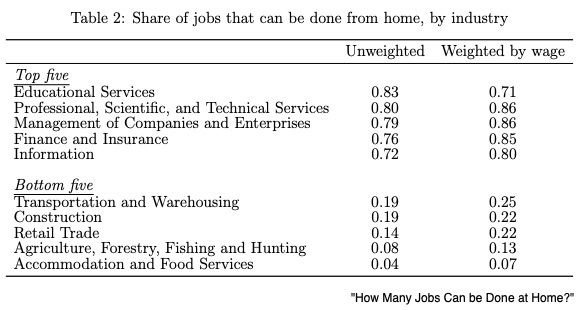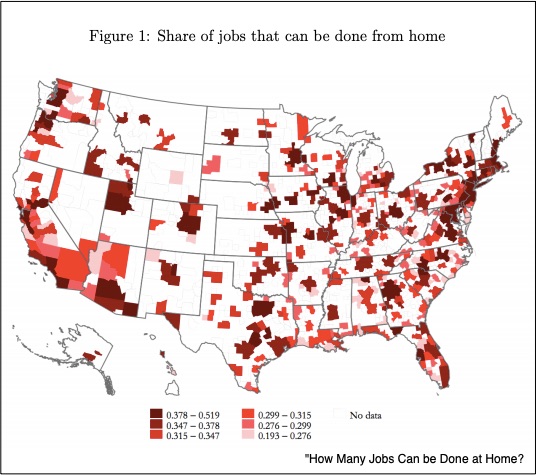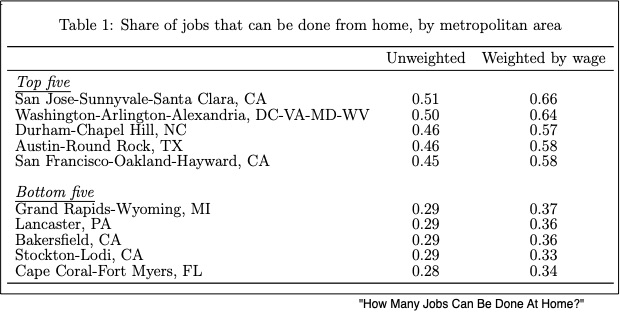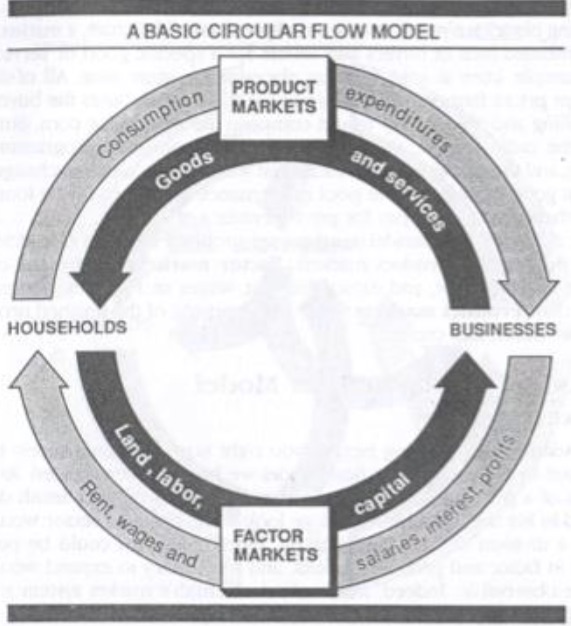On March 26th New Zealand started its one-month lockdown. Having said only people who provide essential services can go to work, the Prime Minister announced that her list included the tooth fairy and the Easter Bunny:
Where are we going? To the jobs that people can do from home.
Working Remotely
Two University of Chicago economists calculated the proportion of the labor force that could work remotely from home. To get a better image of our massive unemployment I wanted to see what they said.
When life is normal, even the less than 25 percent of full time workers who function from home are not there half the time. But with lockdowns, the number ascends to 37 percent of all U.S. full time jobs. (The researchers say their numbers touch an upper bound that could make them rather high.) Meanwhile, occupations that are not working remotely involve, for example, “working outside” or “operating vehicles mechanical devices, or equipment.”
The list of industries with occupations that can be done remotely is topped by education but not when we look at income. Predictably, accommodation and food services are at the bottom:
While occupations that can be done remotely represent 46 percent of all wages, they come from 37 percent of all jobs. Shaded darker red on the following map, you can see some of the places that have more people working from home:
Municipalities in California are in the top five and bottom five:
Our Bottom Line: Labor Markets
An economist might say we are looking at labor markets.
Shown on a circular flow model of the market system, labor markets are located in the lower loop. Below you can see that labor is a factor resource (with land and capital) that households provide to businesses in return for wages and salaries:
At this point, an economist could also point out that the demand for labor in labor markets is similar to other markets. As always, a market is a process through which supply and demand create price and quantity.
But they also send a message. The labor market message from the U.S. Congress through the CARES ACT (Coronavirus Aid, Relief, and Economic Security) involves the new safety net. Rather than offering extended unemployment insurance, they have employer related payments that create the incentive to keep paying homebound employees. In that way, when we return to the workplace, we remain employed.
Please note that parts of today’s “Our Bottom Line” were in a past econlife post and our featured image is from Pixabay.
My sources and more: I started with facts from Reuters on the New Zealand lockdown. Do take a look to compare their approach to what the U.S. has done. Then, for more, the University of Chicago paper had the details on working remotely. And finally, the IRS has the detail of the labor retention provision of the CARES Act.










